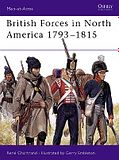I've been off the radar of late as this is a very busy time of year.
Another treat was being finally able to open a wedding present from my Mother in Law*, a beautiful hand painted Nativity from Germany, a country which celebrates Christmas very well. It's on the pianola in the hall and I'm eyeing it with definite plans for expansion. I forsee a sort of triptych arrangement for next year, with three painted backdrops. That said, thus far it is one of only three cribs in the house. Plans for expansion indeed.
It's been a very surprising year and I can't begin to list the things we have to be thankful for. I've weathered another year professionally, without being found out as the fraud I sometimes feel myself to be. Mrs Kinch (mainly her and her father to be honest) and I have managed to turn what was a real fixer upper into a home. Admittedly, a home that has some way to go - but a home nonetheless. There are a hundred and one other things, but I won't go into them now.
I'll be working over Christmas, but I'm due some time off afterwards, so you'll hear more from me after.
Firstly, Christmas is a wonderful time, but not for everyone. If like me, you're bad with money, I recommend thinking of a small discrete unit of money. For me it is the price of a gin and tonic, it could be the cost of a cup of coffee or a packet of chewing gum. Try and think of something that you buy everyday. There are twelve days of Christmas, try to give that much every day of Christmas. I won't advise you where to give it, there are plenty of homeless shelters, charities and other organisations that could find a good use for those few coins. There are some sacrifices so small, that it is shameful not to make them. Pick something different everyday. It's a good feeling.
I guarantee you'll get greedy for it by the end.
Secondly, for those you who like to drink at Christmas, I raise my glass to you. However, I would beg you to please stay off the roads. Delivering bad news at Christmas is never easy, it can certainly spoil the day of the deliverer. Receiving it is far far worse and can blight lives for years, if not longer.
Lastly, Mrs Kinch, Sisi, Sir Harry Flashman VC and I all wish you a very, very Merry Christmas, be it sacred or profane, and hope you all enjoy a peaceful and prosperous New Year.
*She and my wife are very much of the opinion that setting up the tree and the cribs are "boy jobs".



















































